24 Best Food Sources of Vitamin D, Fruits & Their Health Benefits
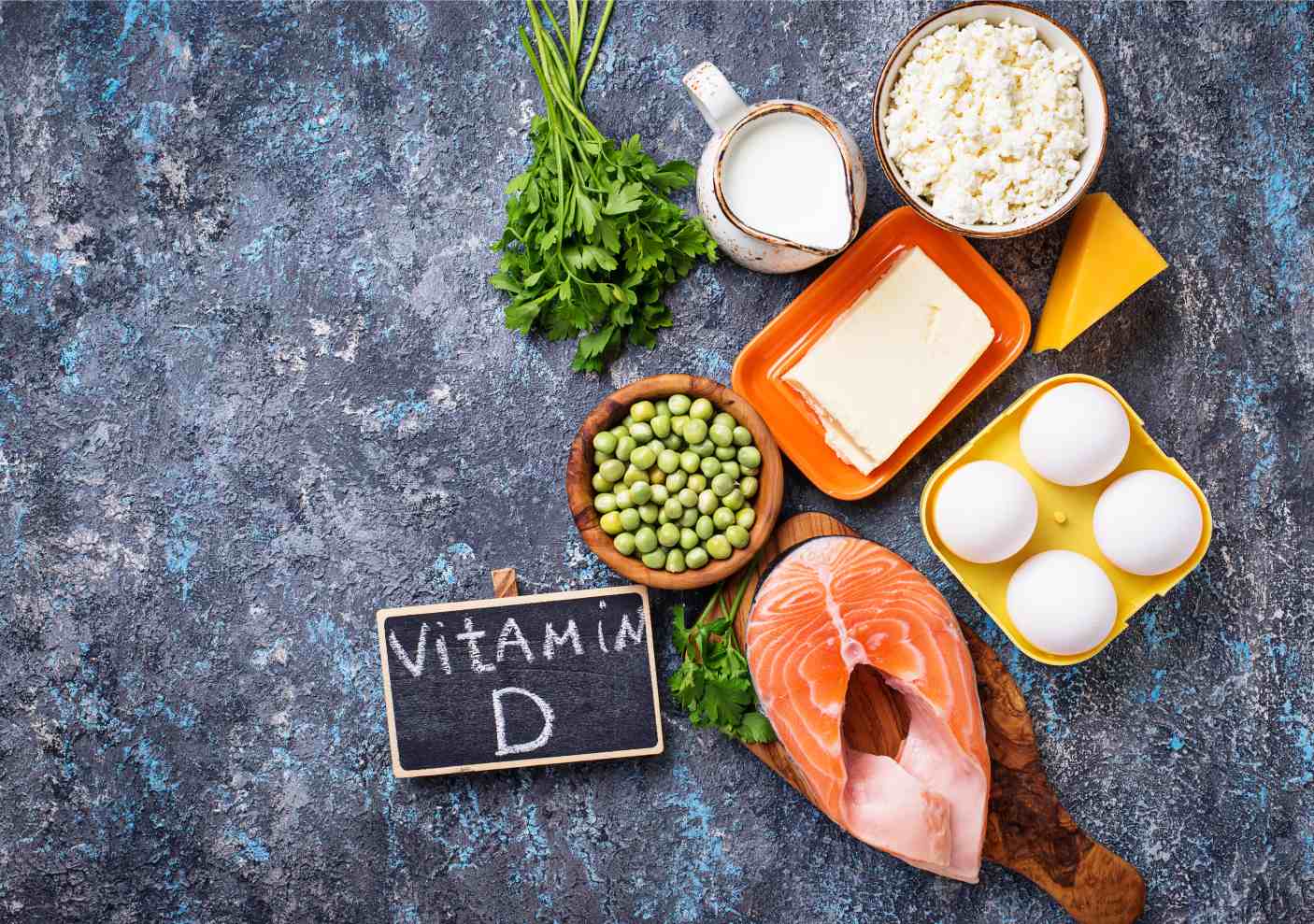
A healthy diet includes the right proportion of carbohydrates, proteins, fats, vitamins, minerals, and roughage. Any one component missing from your diet can lead to malnutrition. More often than not, people suffer from vitamin deficiency.
Further, complications occur because the body has several essential vitamins, and people often miss taking one or the other in their daily diet. One such vitamin is vitamin D, which regulates calcium and phosphate amounts in the body.

Table of Contents

What is Vitamin D?
Along with many other biological effects, vitamin D is a class of fat-soluble secosteroids that increases intestinal absorption of calcium, magnesium, and phosphate. The two most significant human substances in this category are vitamin D2 (ergocalciferol) and vitamin D3 (cholecalciferol). Vitamin D encourages calcium absorption in the stomach and maintains adequate serum calcium and phosphate concentrations.
What are the Sources of Vitamin D?
When exposed to direct sunlight outside, the skin produces vitamin D. But we don't produce enough vitamin D from sunlight between October and the beginning of March. Selective foods also contain vitamin D.
Among the sources are oily fish, including mackerel, salmon, sardines, and herring, red meat liver (don't eat liver if you're pregnant), foods enriched with egg yolks, breakfast cereals, and various fat spreads.
List of Vitamin D Rich Food Items
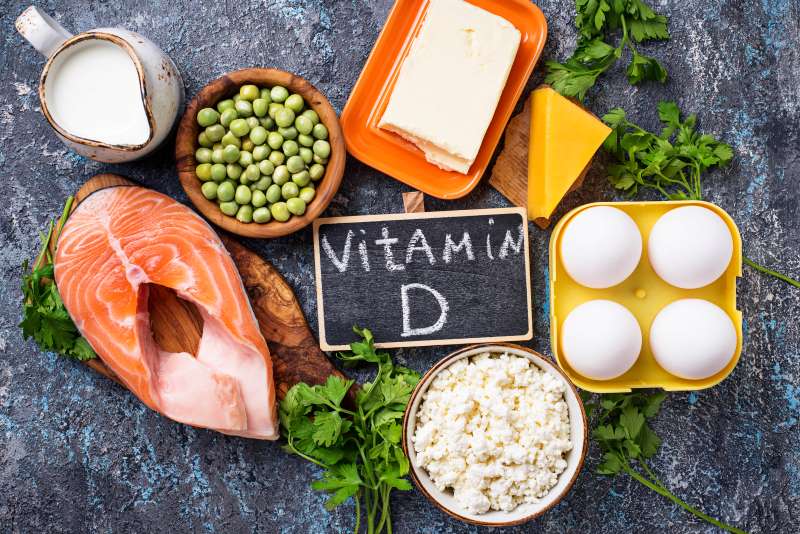
Although sunlight exposure can synthesise vitamin D in your body, it is not reliable because of the weather conditions. Therefore, to get sufficient vitamin D in your body, you should consider including the following vitamin D foods in your daily diet:
Oily fishes like salmon, mackerel, herring, and sardines.
Red meat
Liver
Egg yolks
Fortified foods like fat spreads, breakfast cereals, etc.
Now let’s delve deeper into these food items to understand how much of these foods you should intake.
| SNo. | Vitamin D Rich Foods | Description |
| 1 | Salmon | Atlantic salmon is a fatty fish and an excellent source of vitamin D. According to the United States Department of Agriculture (USDA) Food Composition Database, a single serving of 100gm of Atlantic salmon contains 526 IU of vitamin D. Furthermore, the intake of salmon fishes from the wild or farming can make a big difference. Wild-caught salmon is richer in vitamin D than the ones farmed. A serving of 100gm of wild-caught salmon contains 988 IU of vitamin D, whereas the same for a farmed salmon is only 25% of the given value. |
| 2 | Herrings and Sardines | Herring is a popular fish served around the world in canned, smoked, pickled or raw form. It packs 216 IU of vitamin D per 100gm servings. Further, pickled herring contains 112 IU of vitamin D and sodium, which is also an essential component for the human body. In addition to this, sardines are also a reliable source of this vitamin. It contains 177 IU of vitamin D. Fatty fishes like halibut and mackerel are vitamin D foods one should include in his or her diet. |
| 3 | Cod Liver Oil | You can take this supplement instead of consuming fish. It is nutrient-rich and contains 448 IU of vitamin D per teaspoon. Children suffering from vitamin D deficiency can consider taking this. Furthermore, it is also rich in vitamin A and omega-3 fatty acids, which are essential for your body. However, you should remember not to take too much cod liver oil, as an increase in vitamin A in your body can be harmful. |
| 4 | Canned Tuna | Packing 268IU of vitamin D, canned tuna is an excellent source. It’s also a cheap option compared to buying fresh fish. Also, by consuming canned tuna, you can increase niacin and vitamin K amounts in your body. However, overconsumption of this food item can lead to severe ailments as it contains toxic methylmercury. Therefore, you should consider consuming light tuna instead of white. |
| 5 | Egg Yolks | Seafood is not the only source of vitamin D. A typical egg contains 37 IU of this vitamin. However, the vitamin D content in this food is dependent on sun exposure and the vitamin D content in chicken feed. Therefore, pasture-raised chickens that are sun-exposed produce eggs that are 3-4 times rich in vitamin D. These eggs contain 6000 IU of vitamin D. |
| 6 | Mushrooms | This is a plant source of vitamin D. Like humans; mushrooms can synthesise vitamin D in sunlight. They are rich in vitamin D2 and pack 2300 IU per 100gm. However, the mushrooms are grown commercially and contain low amounts of vitamin D2. Certain brands treat them in UV light, which makes them a good source of vitamin D. These mushrooms contain 130-450 IU of vitamin D2. |
| 7 | Fortified Foods (Cow’s Milk) | Natural vitamin D foods are limited. However, certain food items that do not naturally contain this nutrient are fortified with it. Cow milk is a commonly consumed food item in India. It contains calcium, phosphorus, and riboflavin. It is an excellent source of vitamin D, usually containing 115-130 IU per cup. |
| 8 | Fortified Foods (Soymilk) | Soymilk contains the same amount of nutrients as cow’s milk, making it a healthy food item for vegans and vegetarians. One cup of soymilk packs 107-117 IU of vitamin D. |
| 9 | Fortified Foods (Orange Juice) | Lactose-intolerant people may find this item to be a reliable source of nutrients as it is fortified with vitamin D and calcium. A cup of fortified orange juice provides 100 IU of vitamin D. |
| 10 | Fortified Foods (Cereal and Oatmeal) | Half a cup of cereals contains 54-136 IU of vitamin D, making it a decent source. |
Typically, animal-based foods are rich in vitamin D. Therefore, it is challenging to find vitamin D rich vegetables in the market. To know more about vitamin D sources for vegetarians, refer to the following section!
List of Vitamin D Food Sources for Vegans
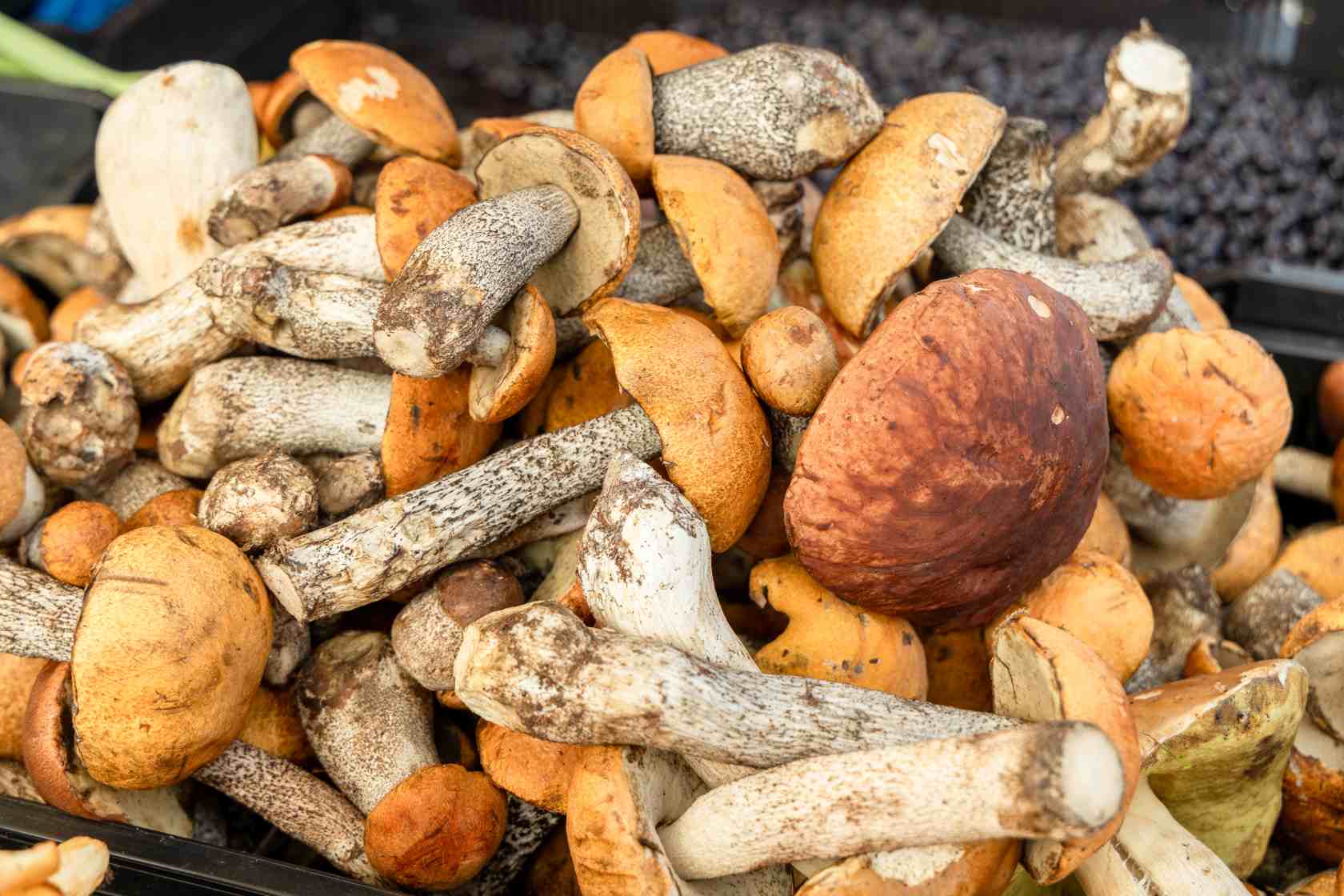
A person’s dietary intake of vitamin D solely depends on animal proteins and fortified food items. Although you would not find vitamin D vegetables, some plant-based food items and plant milk can be good sources of this nutrient. Here are some food items vegetarians and vegans can consume:
SNo. |
Vegan Food Sources | Description |
| 11 | Wild Mushrooms | If you are wondering which vegetable is high in vitamin D, you can count on certain mushrooms, which are plant sources of vitamin D. These mushrooms are exposed to UV light when grown commercially. You should check the label for vitamin D content while purchasing this food item. Furthermore, you can get wild mushrooms from farmers' markets. |
| 12 | Plant Milk | Certain plant milks like soy, rice, oat, hemp, or almond milk are fortified with vitamin D in an amount similar to that of cow’s milk. A cup of such milk provides up to 100 IU of this nutrient. |
| 13 | Yoghurt | Dairy and non-dairy yoghurts are rich in vitamin D as they are fortified. A 100 serving contains around 52 IU of vitamin D. |
| 14 | Tofu | Tofu is an alternative to soft cheese products and is widely consumed by vegans worldwide. Some tofu products are fortified with vitamin D. 100 grams of tofu gives 100 IU of vitamin D. |
| 15 | Hot and Cold Cereals | Certain ready-to-eat breakfast cereals and oatmeal are recognised as good sources of vitamin D because they are fortified. Depending on the variety, a half-cup of cereal packs in about 120 IU of vitamin D. |
| 16 | Margarine | Several brands of margarine add vitamin D to their products, making it a replacement for butter, which does not contain this nutrient. A teaspoon of margarine gives around 20 IU vitamin D. |
In case the above-mentioned food items do not meet your daily vitamin D intake, experts recommend increasing sunlight exposure and taking supplements. Generally, vegetarians can go for vitamin D2 supplements that are derived from yeast or mushrooms exposed to UV rays.
Similarly, vitamin D fruits are also not readily available compared to other nutrient sources. The following section explains some vitamin D-rich fruits in India
List of Fruits Rich in Vitamin D
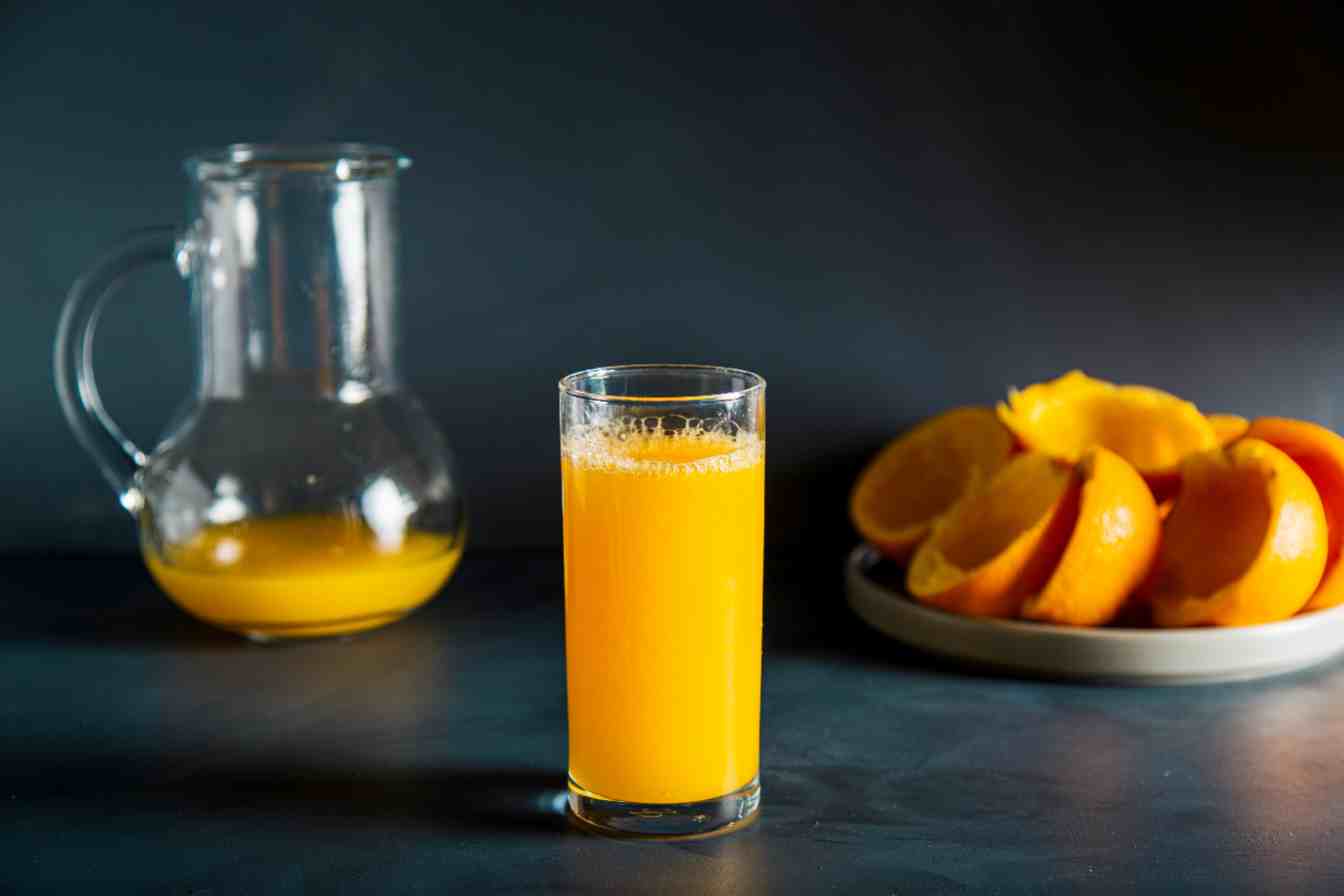
When you plan to include fruits rich in vitamin D in your daily diet, it is advisable to look for fortified food items. These do not naturally contain this particular nutrient but can become a reliable source after artificial treatment. One such item is orange juice.
SNo. |
Fruits | Description |
| 17 | Oranges | When searching for fruits high in vitamin D, orange juice serves the purpose as it is fortified with vitamin D and calcium. A cup of orange juice gives around 100 IU of vitamin D, which is 12% of the Daily Value. (The FDA developed the Daily Value to help consumers compare their daily nutrition intake from foods and supplements with the total diet.) |
| 18 | Avocado | This is a very adaptable fruit with many fantastic health advantages and being delicious. It is a good source of fibre, vitamin D, healthy fats and nutrients. 100 gm of avocado has 25.6 IU. |
| 19 | Bananas | Another great food that is high in vitamin D is the banana. One banana has 75 IU. They are an excellent supply of magnesium, which increases the body's synthesis of vitamin D. Magnesium is essential for regulating levels of parathyroid hormone and the active form of vitamin D, which are vital for preserving bone homeostasis. |
| 20 | Figs | Figs are a rich source of vitamin D. They have 3 IU of vitamin D per 100 gm. They also contain a lot of calcium and phosphorus. All of these increase bone density, which strengthens your bones. These dried fruits also contain vitamins C, A, and B, which support healthy blood pressure regulation and robust digestion, among other health advantages. |
| 21 | Papaya | High in vitamins A, C, and E, papaya is a tropical fruit. Additionally, it has a trace amount of vitamin D in it. You may obtain this nutrient for good health by including papaya. |
| 22 | Dried Mango | Dried mango is a tasty and filling food containing a tiny bit of vitamin D. Savour the dried mango by itself or combine it with other dried fruits to create a tropical concoction. One dried mango has 528 IU. |
In addition, one can increase their vitamin D intake by including breakfast cereals and oatmeal in their diets. Sunlight exposure is also recommended if one fails to include animal-based vitamin D foods in one's diet.
List of Nuts Rich in Vitamin D
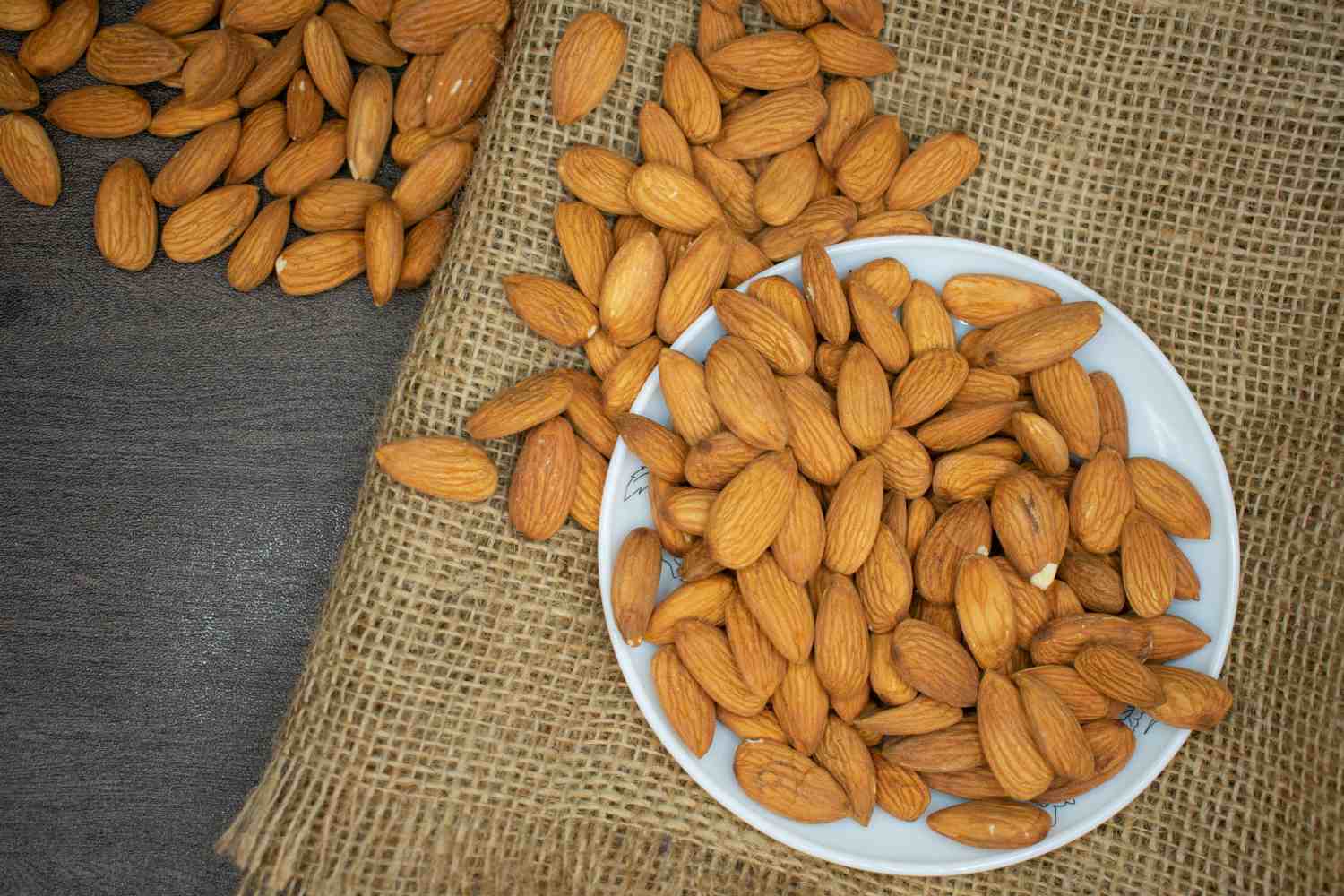
There aren't many nuts available that contain vitamin D. However, the list contains two common nuts that contain vitamin D.
SNo. |
Nuts | Description |
| 23 | Almonds | Almonds are a great source of vitamins, minerals, healthy fats, and protein. They are one of the dry fruits that contain vitamin D, and they are also well-known for being rich in other vital minerals. Almonds have a 9% Daily Value and a minimal IU value. |
| 24 | Cashew Nuts | Cashew nuts have high vitamin D content, which is well known to be an excellent way to promote good health. It has about 600 IU of vitamin D. The nut is rich in vitamin B6, magnesium, manganese, and phosphorus in addition to vitamin D. These nuts support healthy cardiac function, blood sugar regulation, and weight loss. |
How Much Vitamin D Should You Intake?
According to the National Institutes of Health, the amount of vitamin D you need daily depends on your age. Vitamin D is necessary for the body to feel fit and keep fit.
Age Group |
Recommended Vitamin D Intake (micrograms per day) |
| Birth to 12 months | 10 mcg (400IU) |
| Children 1–13 years | 15 mcg (600 IU) |
| Teens 14–18 years | 15 mcg (600 IU) |
| Adults 19–70 years | 15 mcg (600 IU |
| Adults 71 years and older | 20 mcg (800 IU) |
| Pregnant and breastfeeding teens and women | 15 mcg (600 IU) |
Calculate Your Health Metrics Instantly
Role of Vitamin D Rich Foods
Vitamin D is a fat-soluble vitamin responsible for regulating calcium, magnesium, and phosphorus in the body. Vitamin D3 and D2 are also essential components in this group for humans. Generally, your skin can synthesise vitamin D in sunlight due to cholecalciferol in the lower epidermis. However, one can ingest this vitamin from several sources.
As this vitamin keeps the bones, teeth and muscles functioning correctly, deficiency causes bone and teeth deformities. The most common disease observed among the Indian population is rickets.
Here are some other roles of vitamin D rich foods in your body:
Helps in promoting healthy bones and teeth.
Supports the immune, brain and nervous systems.
Regulates insulin level, thereby supporting diabetes management.
Promotes lung function and cardiovascular health.
Influences gene expressions that are involved in cancer involvement.
Therefore, it is vital to intake foods high in vitamin D to keep your bones healthy and functioning properly.
Now let’s go through some food items rich in vitamin D.
What are the Health Benefits of Vitamin D Rich Foods?
Incorporating vitamin D rich foods into your diet can contribute to these benefits, alongside safe sun exposure and supplements if necessary. Here are the health benefits of vitamin D rich foods:
- Bone Health: Helps in the absorption of calcium and phosphorus, which are crucial for maintaining strong bones and teeth.
- Immune System Support: Plays a role in immune function, potentially reducing the risk of infections and autoimmune diseases.
- Muscle Function: Supports muscle strength and function, aiding overall mobility and reducing the risk of falls in older adults.
- Heart Health: May contribute to cardiovascular health by reducing inflammation and improving blood vessel function.
- Mood Regulation: Insufficient exposure to sunlight can lead to a bad mood. Vitamin D helps in regulating mood and ward off depression and anxiety.
- Cancer Prevention: Some studies suggest it may reduce the risk of certain cancers, although more research is needed.
How to Identify Vitamin D Deficiency?
Identifying vitamin D deficiency typically involves considering several factors and symptoms. Here are ways to identify it:
- Symptoms: Look for signs such as fatigue, bone or muscle pain, frequent infections, depression, hair loss, and impaired wound healing.
- Medical History: Assess risk factors like limited sun exposure, dark skin, obesity, older age, or gastrointestinal conditions that may affect nutrient absorption.
- Blood Test: The most accurate way is through a blood test measuring 25-hydroxyvitamin D levels. Levels below 30 ng/mL generally indicate deficiency, with optimal levels typically considered 30-50 ng/mL.
- Physical Examination: A healthcare provider may check for signs like bone tenderness or muscle weakness during a physical exam.
- Bone Density Scan: In severe cases, bone density scans (DEXA) may reveal osteoporosis or bone weakening due to prolonged deficiency.
Different Ways to Include Vitamin D Rich Foods
Incorporating these foods and practices into your daily meals and snacks can help you meet your vitamin D requirements for overall health and well-being. Here are various ways to include vitamin D rich foods in your diet:
- Fatty Fish: Add fatty fish such as salmon, trout, mackerel, and tuna to your meals. Grill, bake or pan-sear them with herbs and spices for a delicious main course.
- Egg Yolks: Include egg yolks in your breakfast or meals. Make omelettes frittatas, or simply enjoy boiled eggs as a snack.
- Fortified Foods: Look for fortified foods like fortified milk, orange juice, yoghurt, and cereals that contain added vitamin D. Check the labels to ensure they have added vitamin D.
- Mushrooms: Some mushrooms, like shiitake and portobello, contain vitamin D. Incorporate them into stir-fries, soups, or grilled dishes.
- Cheese: Certain types of cheese, including cheddar, Swiss, and mozzarella, contain small amounts of vitamin D. Use them in sandwiches, wraps, or as a topping for dishes.
- Cod Liver Oil: Consider taking cod liver oil as a supplement, as it is rich in vitamin D and omega-3 fatty acids.
- Smoothies: Blend fortified milk or yoghurt with fruits like bananas, mangoes, or berries to create a nutritious smoothie that can also help you increase your vitamin D intake.
- Salads and Sandwiches: Add canned tuna or salmon to salads or sandwiches. Combine with leafy greens, vegetables, and a light dressing for a vitamin D-packed meal.
- Snacks: Snack on boiled eggs, cheese slices, or yoghurt with added vitamin D. Pair them with whole-grain crackers or fresh fruits for a balanced snack.
What are the Health Risks of Not Getting Enough Vitamin D?
Ensuring adequate vitamin D intake through sunlight exposure, fortified foods, and supplements if necessary, can help mitigate these risks and support overall health. Here are the health risks associated with not getting enough vitamin D:
Side Effects of Excessive Vitamin D Intake
If you suspect you have taken too much vitamin D or are experiencing any of these symptoms, seek medical attention promptly. Excessive intake of vitamin D can lead to several potential side effects, which include:
- Hypercalcemia: This condition occurs when there is too much calcium in the blood, leading to symptoms such as nausea, vomiting, weakness, and frequent urination.
- Kidney Stones: High vitamin D levels can increase calcium levels in the urine, potentially leading to the formation of kidney stones.
- Digestive Issues: Excessive vitamin D may cause digestive discomforts such as diarrhoea, constipation, or abdominal pain.
- Bone Loss: Paradoxically, excessive vitamin D can lead to bone loss and weaken bones, potentially increasing the risk of fractures.
- Heart Problems: Very high vitamin D levels may affect the heart, causing irregular heart rhythms or other cardiac issues.
- Weakness and Fatigue: Excessive vitamin D intake can cause some individuals to experience general weakness, fatigue, or confusion.
Take the Next Step for Your Wellbeing
Should You Take a Vitamin D Supplement?
Since it's difficult for individuals to receive enough vitamin D from diet alone, throughout the autumn and winter months, everyone (including women who are pregnant or nursing) should consider taking a daily supplement containing 10 micrograms of vitamin D.
Most people can obtain all the vitamin D they require from a balanced diet and exposure to sunlight on their skin between late March/early April and the end of September. Contact a healthcare professional to get the correct vitamin D dose if needed.
Getting enough vitamin D is essential for keeping bones strong. Spending time in the sun outside is the simplest method to ensure adequate vitamin D. However, taking vitamin D pills or integrating foods high in vitamin D into your diet can also be very helpful in accelerating this process.










